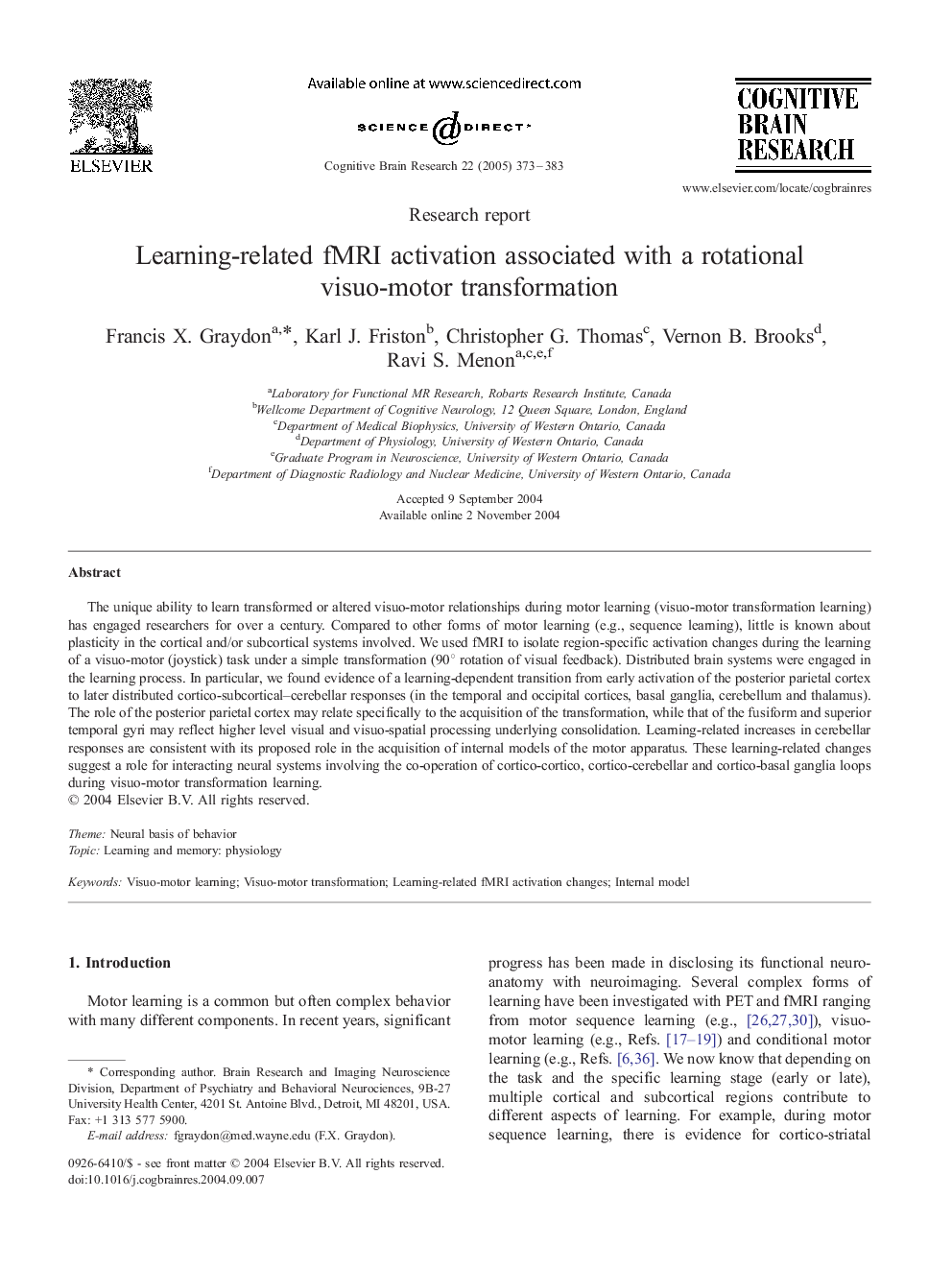| Article ID | Journal | Published Year | Pages | File Type |
|---|---|---|---|---|
| 9408194 | Cognitive Brain Research | 2005 | 11 Pages |
Abstract
The unique ability to learn transformed or altered visuo-motor relationships during motor learning (visuo-motor transformation learning) has engaged researchers for over a century. Compared to other forms of motor learning (e.g., sequence learning), little is known about plasticity in the cortical and/or subcortical systems involved. We used fMRI to isolate region-specific activation changes during the learning of a visuo-motor (joystick) task under a simple transformation (90° rotation of visual feedback). Distributed brain systems were engaged in the learning process. In particular, we found evidence of a learning-dependent transition from early activation of the posterior parietal cortex to later distributed cortico-subcortical-cerebellar responses (in the temporal and occipital cortices, basal ganglia, cerebellum and thalamus). The role of the posterior parietal cortex may relate specifically to the acquisition of the transformation, while that of the fusiform and superior temporal gyri may reflect higher level visual and visuo-spatial processing underlying consolidation. Learning-related increases in cerebellar responses are consistent with its proposed role in the acquisition of internal models of the motor apparatus. These learning-related changes suggest a role for interacting neural systems involving the co-operation of cortico-cortico, cortico-cerebellar and cortico-basal ganglia loops during visuo-motor transformation learning.
Keywords
Related Topics
Life Sciences
Neuroscience
Behavioral Neuroscience
Authors
Francis X. Graydon, Karl J. Friston, Christopher G. Thomas, Vernon B. Brooks, Ravi S. Menon,
